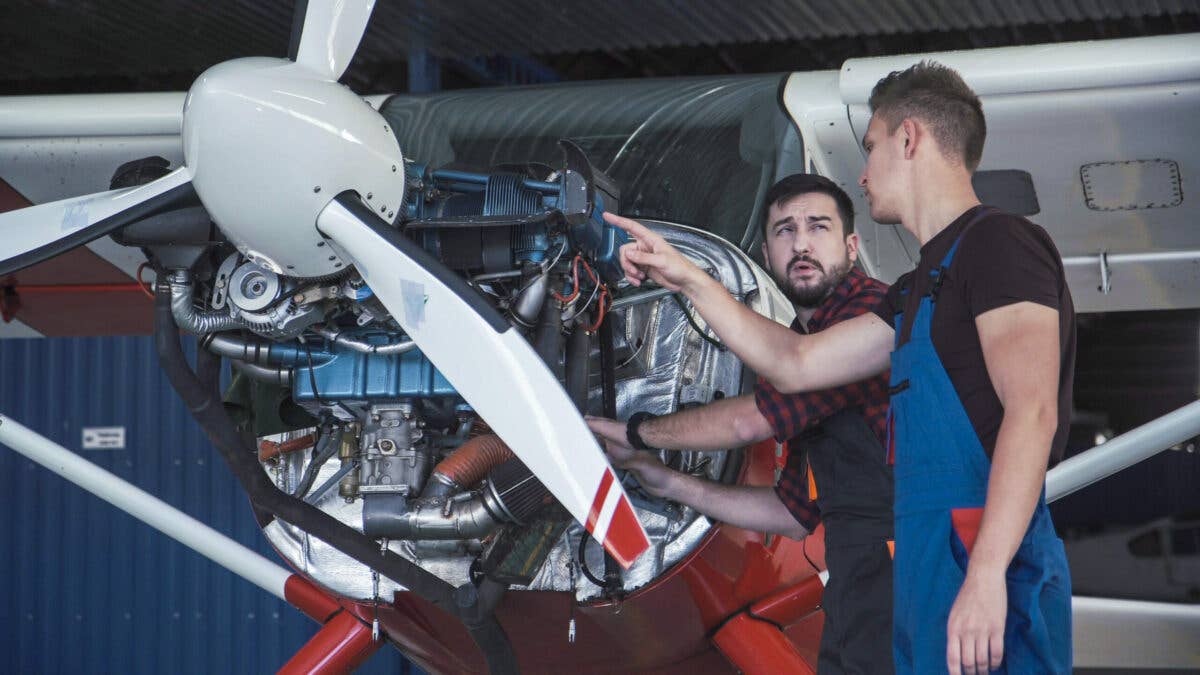Can You Ask to Review Logbooks for Rental Aircraft?
When renting an aircraft, there are certain things you should be looking for in maintenance records.

When renting an aircraft, there are certain things you should be looking for in maintenance records. [Credit: Shutterstock]
Question: I acquired my private pilot certificate in my own airplane a few years back. I sold the airplane, so now I need to rent in order to stay current. My friends who rent on a regular basis are warning me to check the maintenance books of the aircraft before I fly them. I have never rented an airplane before. What should I be looking for?
Answer: You should check the maintenance logbooks to make sure the aircraft is legal to fly. Start with the required inspections. They can be found under FAR 91.409, 91.411, 91.413, and 91.207. Many pilots learn the acronym A AV1ATE to recall the required inspections—with the “1” replacing the “I”:
Airworthiness Directives
Airworthiness directives (ADs) are the items that are aircraft make and model specific—for example, the seat rail AD for certain Cessna aircraft—and must be done at specific time intervals. These come from the FAA, and often aircraft owners dedicate a logbook to ADs only. Other times compliance with the ADs can be found in the logbook entries for other required inspections. Read those entries carefully.
Annual Inspection
As the name implies, these are completed every 12 calendar months. The annual inspection must be performed and signed off on by an airframe and powerplant mechanic with an inspection authorization (AP/IA).
Calendar months is a fancy way of saying “to the end of the month.” So let's say the aircraft's annual was completed and signed off on September 23, 2022. The next annual is due October 1, 2023.
Annual inspections can be very involved and take several days, weeks, or even months, depending on what issues are found (if any) and the availability of parts if something needs to be replaced.
VOR Receiver
“V” is short for VOR receiver, which must be checked within the preceding 30 days for an IFR flight, per FAR 91.171. Note that IFR is specifically called out. If you are flying VFR, having a VOR past its check deadline is not a grounding issue.
It is unlikely the VOR check will be in the aircraft maintenance logs, as many owners have a log or other record in the aircraft to record it. Look for that as well, noting the date the check was completed, the place (such as over an established VOR airway), bearing error (if any), and the signature of the person who conducted the VOR check.
100-Hour Inspection
The “I” in AVIATE is actually a “1” for "100-hour". If the aircraft is used for compensation or hire, it is required to have a 100-hour inspection, per FAR 91.409(b). It can be confusing if the airplane belongs to a flying club, or if the instructor (if required) is not employed by the club or FBO. According to AOPA, if a customer rents the aircraft from a club or school, but the club or school doesn't supply the instructor, the aircraft does not require a 100-hour inspection. The phrase "for hire" refers to the person, not the aircraft itself. Be advised that the annual inspection can replace a 100-hour, but the 100-hour, which is usually much less intense than the annual, cannot replace the annual.
Altimeter
The third “A” stands for altimeter, which is part of the pitot-static system—because it is the pitot-static system that is required to be inspected and tested every 24 calendar months if the aircraft will be flying in controlled airspace under IFR rules. The check should include the aircraft's static system, altimeter, and automatic altitude-reporting (Mode C) system.
Transponder
“T” is for transponder, which must be inspected every 24 calendar months.
Emergency Locator Transmitter
“E” is for the Emergency Locator Transmitter, or ELT, which must be inspected within 12 calendar months.
Each inspection must be signed off on by the AP who performed them, and in addition to their name, their certificate number must be recorded.
Progressive Maintenance
Some of the busier flight schools/FBOs use a progressive inspection to minimize the downtime of their aircraft. Progressive inspections allow for more frequent inspection phases, but they focus on one section of the aircraft at a time—for example, the airframe might be checked every 40 hours, the pitot-static system every 40 hours and so forth.
For a list of things that are checked during the annual and 100-hour inspections, refer to FAR 43, Appendix D.
When going through the maintenance logs, note if there have been any modifications to the aircraft (such as installation of vortex generators) and be sure the accompanying 337 form is there as well.
You will also want to check the weight and balance sheet of the aircraft. One is required to be in the aircraft for it to be airworthy—make sure it matches what is in the aircraft maintenance logs.
Do you have a question about aviation that’s been bugging you? Ask us anything you’ve ever wanted to know about aviation. Our experts in general aviation, flight training, aircraft, avionics, and more may attempt to answer your question in a future article.

Sign-up for newsletters & special offers!
Get the latest FLYING stories & special offers delivered directly to your inbox






